What is diabetes?
Diabetes is a disease that prevents the body from properly using blood glucose (aka, blood sugar). When you eat food, your body converts sugars in the food into fuel your cells can use. Insulin opens channels to allow the glucose into cells where it’s used as energy. If you have type 2 diabetes, however, the body becomes less capable of moving the sugar, and the cells become less responsive to the insulin they receive, too; if you have type 1 diabetes, your pancreas isn’t making insulin or is making very little. (Here’s the difference between type 1 and type 2 diabetes.)
The result: blood sugar levels that are too high. According to the Centers for Disease Control and Prevention, more than 30 million Americans have diabetes and 84 million people have prediabetes (a condition that occurs when your blood sugar levels are elevated but not high enough to be type 2 diabetes).
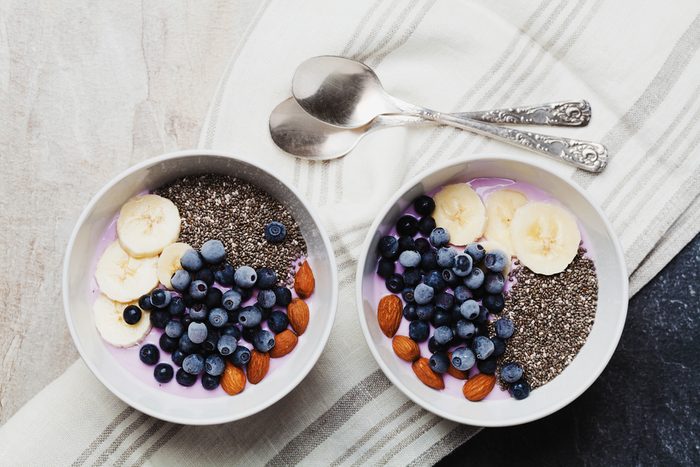
You’re a breakfast eater
We always hear that breakfast is the most important meal of the day, but this may be particularly true for individuals with diabetes, says Alison Massey, RD, a certified diabetes educator at Frederick Primary Care Associates in Frederick, Maryland. Waiting too long to eat in the morning might result in hypoglycemia, or blood sugar that is too low. “Even when my clients aren’t typical ‘breakfast eaters,’ I encourage them to incorporate a small snack into their morning routine, like Greek yogurt with some berries or a hard-boiled egg and slice of whole-grain toast,” she says. It doesn’t have to be a sit-down meal, but make sure you have something healthy in your body so you don’t crash. Follow these healthy breakfast rules for diabetics.
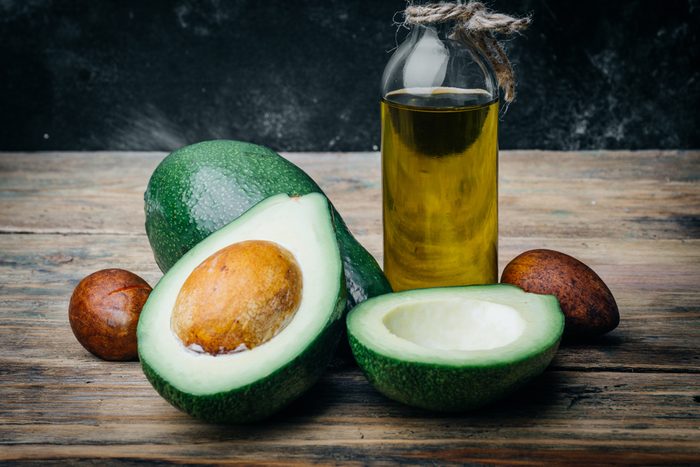
You eat healthy fats
Research suggests that excessive fat intake (more than 30 percent of total calories) may worsen insulin resistance, which is a problem for people with prediabetes or type 2 diabetes. In a review of studies published in 2017 in the International Journal of Health Sciences, researchers found an association between fat intake, type 2 diabetes, and impaired glucose tolerance. Stay away from meals that tend to contain high amounts of saturated fat, like those from fast food restaurants. The mechanism isn’t clearly understood, but the report also found a modest benefit in monounsaturated fatty acids (MUFAs) on insulin resistance. MUFAs are good-for-you fats found in avocados, olive oil, nut butters, and seeds, to name a few. A diet that is high in MUFAs and lower in saturated fats is also associated with improvements in cardiovascular health, lower LDL cholesterol, and reduced triglycerides and blood pressure, says Massey. Here’s how to make cheese part of a diabetes-friendly diet.
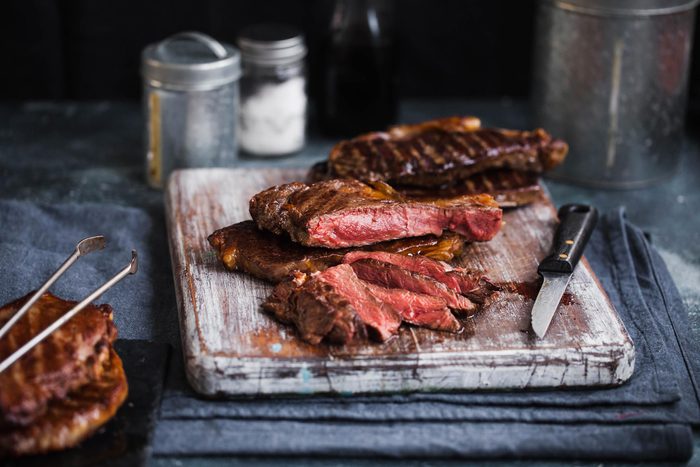
Your protein portion is palm-sized
Overindulging in protein could impact your blood sugar levels, especially if that protein at your meal is from red meat, which may have an adverse impact on insulin sensitivity, says Massey. Increased consumption of red meat has been associated with an increased risk of type 2 diabetes in research. It’s also not a bad idea to limit intake of red meats to improve cardiovascular health, says Massey. Processed meats like deli meat and hot dogs can also increase the risk of diabetes. (Be sure to check out this list of healthy foods that diabetics are bound to love.)
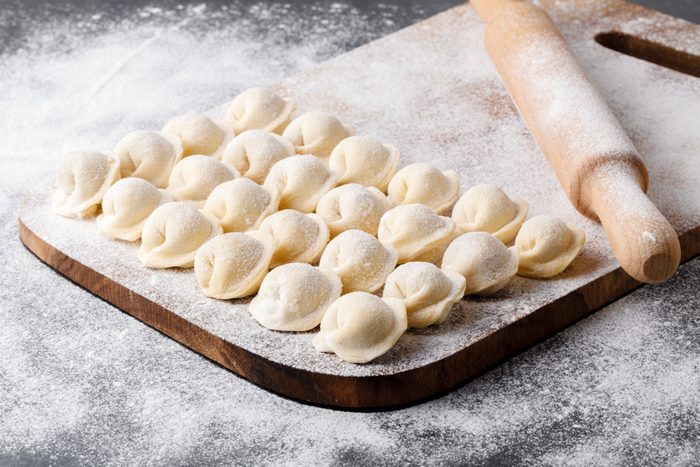
You eat balanced meals
Eating too much of one thing (like carbs) and not enough of another (like veggies and lean proteins) could cause blood sugar levels to spike. “Balanced meals help with satiety and provide you with all the nutrients you need,” says Massey. Pairing a lean protein (like a boneless, skinless chicken breast) with high complex carbohydrate food (like brown rice) may slow digestion, and help you feel full longer while having a minimal impact on blood glucose levels after the meal, she says. These are clear signs you have high blood sugar.

You don’t skip meals
Even if you’re busy (and who isn’t?) you make time to eat at regular intervals. “Waiting too long between meals can also result in hypoglycemia for individuals with diabetes, especially if they’re taking particular diabetes medications,” says Massey. If left untreated, hypoglycemia can get worse and cause confusion, clumsiness, or fainting. Severe hypoglycemia can lead to seizures, coma, and even death, according to the National Institute of Diabetes and Digestive and Kidney Diseases. Consistency with meal intake can also help with other habits that should be consistent like monitoring blood glucose regularly (for those who monitor before they eat) and taking medications as prescribed, Massey suggests. If you have diabetes or have prediabetes, make sure you have some candies, juice boxes, or milk on hand to raise your blood glucose levels up quickly if they’ve dipped too low. (Learn the best and worst drinks for people with diabetes, too.)
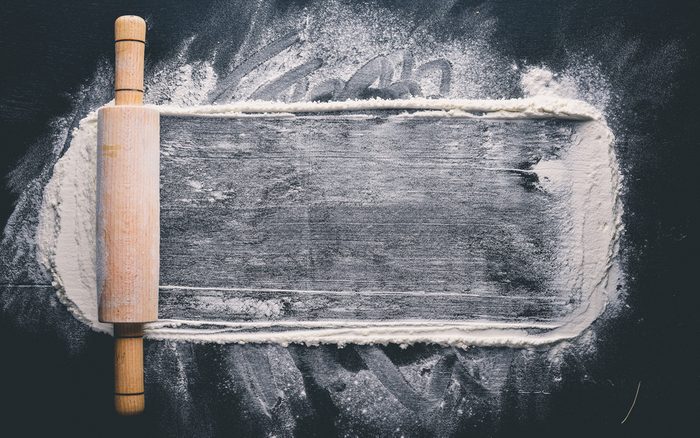
You eat lots of fiber
“Although the glycemic index of foods is a bit controversial, the quality of carbohydrates in the diet matters,” says Massey. Refined carbohydrates (like white bread, pretzels, chips) have been linked to higher rates of insulin resistance. One study, published 2018 in the journal BMJ, found a direct relationship between refined carbs and obesity, type 2 diabetes, cardiovascular disease, and some cancers. Limit processed products made with white flours and added sugars. Instead, focus on healthy, diabetes-friendly snacks that are high in fiber and made with whole grains, like a string cheese stick and a few whole grain crackers, air-popped popcorn, and peanut butter. (Curious? Find out if eating too much sugar can cause diabetes.)
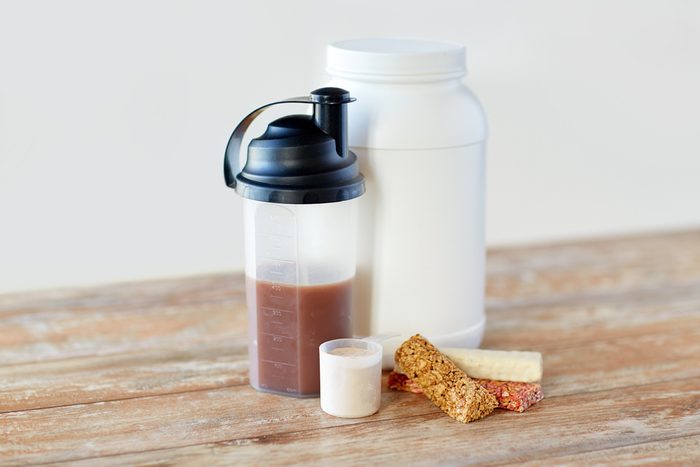
You plan for exercise
Blood glucose monitoring before exercise is very important for people with diabetes because exercise lowers blood glucose. This provides information on whether you might need a small snack to help prevent blood glucose that goes too low (hypoglycemia) during an exercise session, says Massey. “I recommend that my clients bring glucose tablets with them when they are exercising, so they can appropriately treat an incident of hypoglycemia.” Glucose gels or even sports drinks can also be useful for treating hypoglycemia during a workout session. If you’re consistently hypoglycemic with physical activity, talk to your doctor and/or diabetes educator because they may need to adjust your medication regimen. (Don’t forget about these tricks for managing hypoglycemia, either.)

You focus on portion control and weight loss
Not only can losing weight improve insulin sensitivity but managing your weight is an important part of managing your diabetes. For people with type 2 diabetes, additional weight gain from overeating can contribute to more insulin resistance and also lead to needing more medication, says Massey. Eating large meals, especially those that contain a lot of carbohydrates, typically result in after-meal blood glucose readings that are elevated. Ideally, people with diabetes want after-meal blood glucose readings to be less than 180mg/dL. Oftentimes, Massey has people monitor blood glucose before and then two hours after the start of a meal to assess how their food choices are impacting blood glucose levels. “Typically we are looking for no more than a 40- to 50-point increase, so if the blood glucose is 120 before a meal and 250 after a meal, that 130-point difference indicates that the meal was too high in carbohydrates,” says Massey. Talk to your doctor or diabetes educator about how to create a diabetes-friendly diet that’s best for your health (and be sure to avoid these prediabetic diet for weight loss mistakes you might be tempted to make).

Your bedtime snack goes easy on the carbs
Eating late at night can wreak havoc on fasting blood glucose levels the next morning. Late-night meals typically cause blood glucose levels to be elevated more than usual the next morning, which can be problematic especially if it’s above the blood glucose fasting target range (typically 80-130mg/dL, per guidelines from the American Diabetes Association). “When I am discussing late-night snacking with my clients I typically recommend that they consume a small, fiber-rich carbohydrate snack (20 grams or less) with a lean protein to help with satiety,” says Massey. Ask yourself if you’re eating because you’re truly hungry or if you’ve simply developed the habit to snack at night. If it’s the latter, consider brewing a mug of herbal tea and finding something else to do instead of eating. Massey suggests a clementine and a few pistachios as an ideal evening nosh, or consider these healthy diabetes-friendly snack ideas.
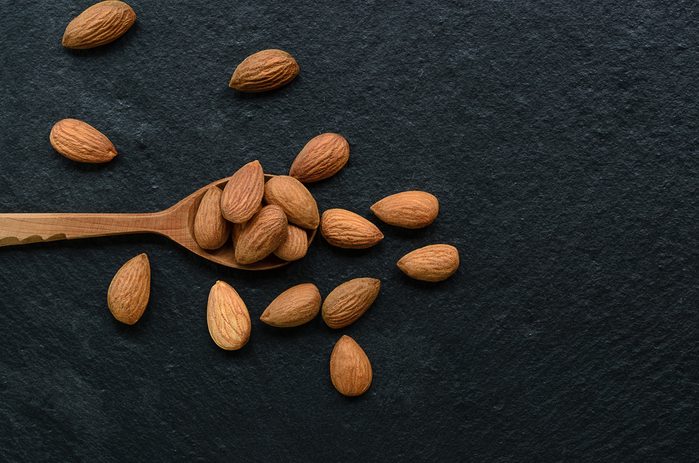
Your snack hits the spot
For people with diabetes, snacks are one way to help keep blood sugar even throughout the day, but you have to be mindful of how many calories you’re getting from a single snack. “Watch the portion size and calorie count of snacks,” says Refaat Hegazi, MD, medical director of adult nutrition at Abbott. “Pre-portion snacks so you aren’t tempted to eat a large quantity.” That means no eating straight from the bag, even if the food is healthy. These nutrition superstars and diabetes-friendly foods belong in your diet if you have diabetes.
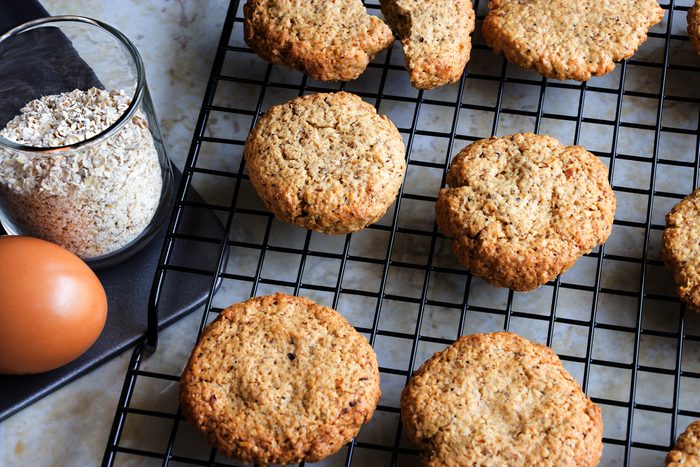
You eat lots of fiber
Fiber helps slow the rise of blood glucose levels after a meal, and it interferes with cholesterol absorption, which can reduce your risk for heart-related health issues. “Adults should consume about 20 to 35 grams of fiber each day from a variety of foods, and the majority fall short of that target,” says Rebecca Dority, RD, associate professor of professional practice and director of the Didactic Program in Dietetics at Texas Christian University in Fort Worth, Texas. “In general, foods that are high in fiber do not raise blood glucose levels because fiber is not digested by the body.” Soluble fiber can be found in foods including oatmeal, lentils, apples, pears, blueberries, flax seeds, beans, and dried peas, Dority says. (You can safely ignore these common diabetes myths.)
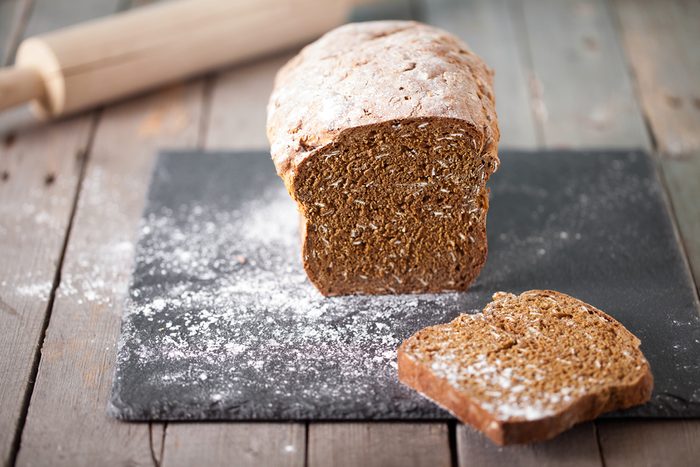
You make sure to eat enough carbs
People with diabetes have to be aware of the number of carbohydrates they consume, as well as the type. However, too much of a good thing could be bad. “Sometimes, being too restrictive with carbohydrates can also be a downfall if it leads to binge eating them later,” says Haley Hughes, RD, a certified diabetes educator with RDRx (Registered Dietitian Prescribed). To get a better handle on how many carbs you’re eating and what it does to your food choices and blood sugar, Hughes recommends recording what you eat and how it makes you feel. “I often encourage keeping a food journal along with tracking blood sugar–if your physician has advised you to do so–to better help understand trends and areas for improvement,” Hughes says. It’s not just foods that can impact your diabetes. These everyday habits might increase your risk of diabetes, too.
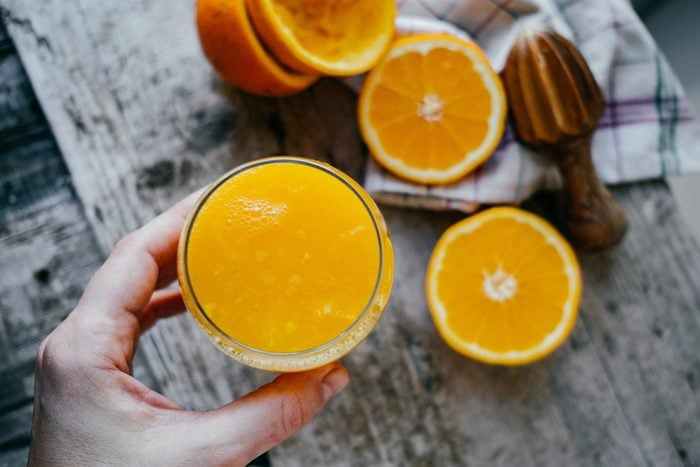
You don’t drink sugary beverages
“The Number One thing my patients do to sabotage their success in managing their diabetes is drinking sweetened beverages like regular soft drinks, sweet tea, and juice,” says Julie Cunningham, RD, a certified diabetes educator in Hendersonville, North Carolina. “People don’t realize how much sugar can be consumed in liquid form, and how quickly that can spike your blood sugar. Juice and soda are used to treat low blood sugar because they bring low blood sugar up quickly. That’s great if you’re low. If you’re not low and you drink those same beverages, you’re going to be high pretty quickly.” (Here’s more on the difference between hyperglycemia and hypoglycemia.)
Cunningham suggests people with diabetes trade the sweetened beverages for unsweetened drinks and use the sweetened ones only when they need to bring up low blood sugar levels quickly. (This list of best and worst drinks for people with diabetes can help.)
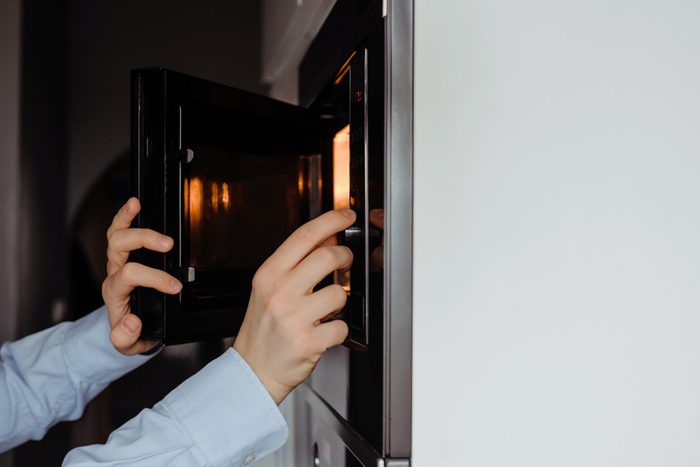
You avoid high-sugar ‘low-fat’ foods
The fad food of the ’80s still remains on store shelves, despite mounting evidence that tells us whole foods are better for just about every health condition and ailment, including type 2 diabetes. “Many diet and low-fat items are packed with added sugar in order to compensate for the reduced amount of fat,” says Jillian Kubala, RD, in Westhampton, New York. “To better control blood sugar levels, consume whole, nutrient-dense foods whenever possible.” (You need to know about these surprising diabetes complications so you can avoid them.)
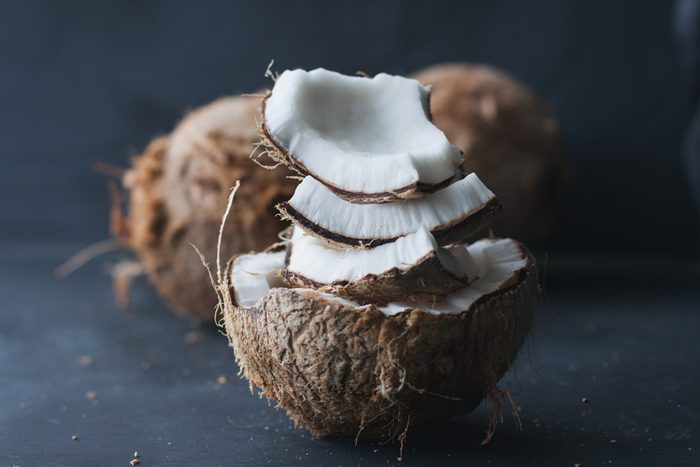
You eat healthy fats
“Don’t avoid fats!” Kubala says. “Healthy fats such as nuts, seeds, coconut, avocado, olive oil, and whole eggs are packed with nutrients that can help stabilize blood sugar and keep you satisfied.” Adds Caitlin Self, a functional nutritionist with Charm City Integrative Health in Baltimore, Maryland: “Fat is the only macronutrient that doesn’t need insulin to be processed, so incorporating healthy fats into every meal can help to balance blood sugar throughout the day.”
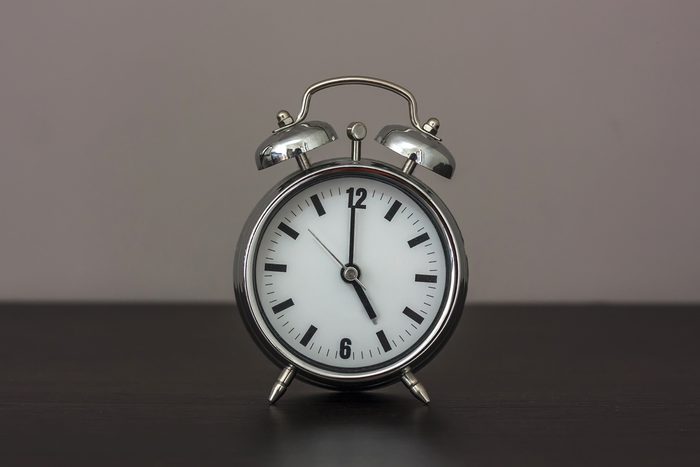
Your eating is spaced throughout the day
Going a long time between meals can allow your blood sugar levels to dip too low, and that includes the time between dinner and breakfast. If you are an early diner and don’t eat snacks before bed, you may experience blood sugar drops before you get up in the morning. “Not eating for a long time can allow blood sugars to go too low—this includes overnight,” says Katie Chapmon, RD, in Los Angeles, California. “For many people, they need a nighttime snack about one to two hours before bedtime to ensure blood sugar control overnight.” You can’t eat too late, however. That’ll make your blood glucose elevated the next morning. For some patients who are not at risk for hypoglycemia, however, eating a meal early may not be a problem.
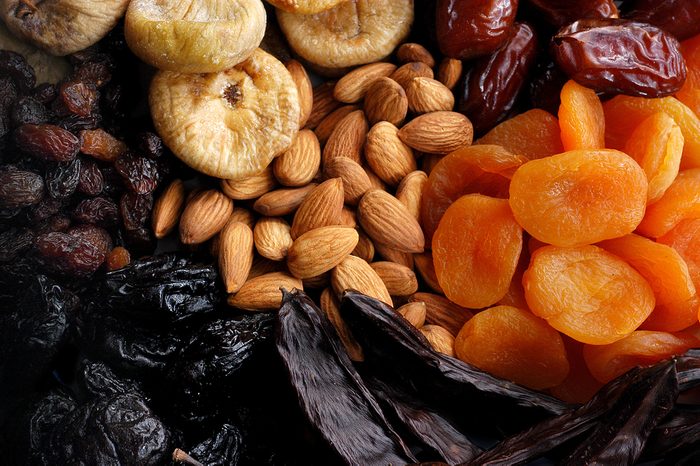
You eat fresh fruit
If people with diabetes should be eating more fresh fruits and vegetables, dried fruits certainly count toward your goal, right? Wrong. Indeed, these fruits could make your blood sugar soar.
“While dried fruit is a great on-the-go option, it’s the last form of fruit you should be going for if you suffer from diabetes,” says Nate Masterson, chief marketing officer and certified health expert for Maple Holistics in Farmingdale, New Jersey. “When fruit is dried, it becomes more concentrated in sugar and, therefore, can spike your blood sugar levels in ways that fresh fruit won’t.” Find out more tricks for living well with diabetes, from people who have it.


